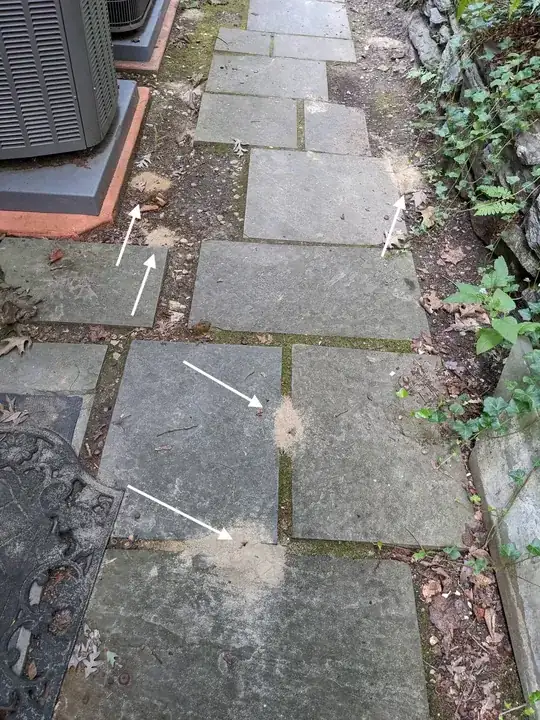What animal is this digging holes on my property and should be be concerned about the walkway and the nearby garden walls?
-
How wide are the holes and where in the world are you? – Jurp Sep 18 '22 at 17:39
-
@Jurp 1/2", Philadelphia, PA – Wynne Sep 19 '22 at 18:30
2 Answers
Appears to be anthills, usually not a particularly huge issue, unless they are nasty bitey ants, or ants that would be unlikely to have holes like that (such as carpenter ants, which nest in wood and can damage wooden buildings.)
Local to me we have invasive European fire ants that I kill with abandon, and other ants I don't. Unfortunately that does mean the only workable way to kill the fire ants is by crushing - poisions kill them all, and the invasives come back stronger. Boiling water on the nest is another possibility if you know where the nest is. Selectively killing the invasives while leaving the others alone helps move things towards a more normal balance, but is tedious.
If you are not getting bitten, most likely fine to leave those alone.
- 22,158
- 22
- 49
-
1There is also a beneficial parasitic wasp that leaves these kind of holes in lose, sandy soils. This is why I asked about hole size and location. Their holes are solitary and grouped in the same location, just like these. If I get a response to my question and the diameter and location match, I'll post it as an answer. – Jurp Sep 19 '22 at 12:33
Based on your comment that the holes are half an inch in diameter, I think the holes were made by a ground-digging wasp rather than ants (unless you can actually see ants using the holes as entrances/exits to their nest, of course).
Here in Wisconsin, holes like you've described/pictured are often made by the Great Golden Digger wasp (Sphex ichneumoneus), which uses each hole to house a paralyzed prey insect and one egg. The dig only in loose soils or compacted sand, but not loose sand. This matches the paved area where the holes in your yard are located. The wasps are large but ignore humans, although I suppose if you got in the way of a wasp while she was digging her hole she might sting. They're in many places in my yard and have always left me alone.
Another possibility is a wasp with apparently no common name, called Ammophila urnaria. It is common in the Eastern US, but appears to cover the entrances to the holes after it finishes laying its egg.
There are other digging wasps, such as Cicada Killers, but none really match what you've pictured.
- 18,009
- 1
- 15
- 36
-
We get burrowing wasps every year, these years. They're really cool. They're large and long, without skinny parts, and don't look like any of the ones you've mentioned by name. They fly around their holes a lot (quickly), and play with each other. Their abdomens throb. I usually see them in the early morning after the sun has come up. I've only been stung by one when it was disturbed by us piling firewood over/around its hole (it stung me in the middle of the top of my foot). They like dry bare soil, but sometimes make homes in cracks in driveways and stuff like that. – Brōtsyorfuzthrāx Sep 21 '22 at 11:54
-
1@Brōtsyorfuzthrāx. You're right, there are many other diggers. I found a site with 17 different species listed, including the two in my answer. The Tarantula-killer wasps are probably the biggest, but those live in southern states; they also have the most painful insect stings in the world. Many (like the Great Golden Digger) are not wasp-waisted. – Jurp Sep 21 '22 at 12:53
